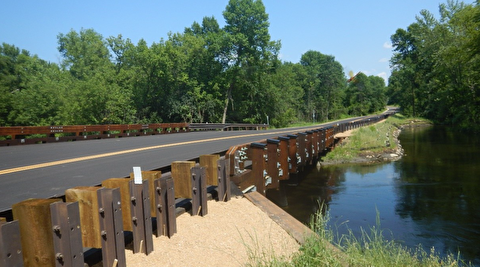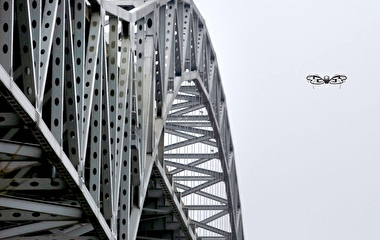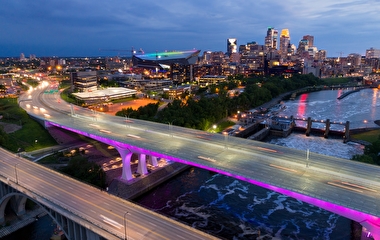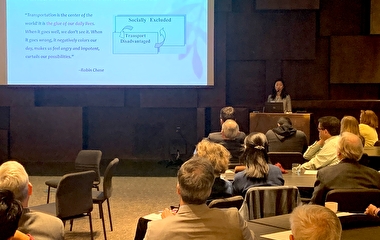As Minnesota’s local road agencies grapple with the challenges of renewing an aging bridge infrastructure with limited resources, alternatives to bridges made with concrete and steel are needed. In a research project sponsored by the Minnesota Department of Transportation (MnDOT) and the Minnesota Local Road Research Board (LRRB), researchers found that timber-based bridges can be built more quickly than steel or concrete bridges for similar costs, perform well for 70 years or more, and help meet green building standards.
“Despite a negative perception of timber bridges by some engineers and owners, this project clearly shows that timber bridge systems are capable of being cost-competitive and long lasting,” says Donald Fosnacht, associate director of the University of Minnesota Duluth’s Natural Resources Research Institute (NRRI). “The design aids developed with this project will help increase the awareness of modern timber systems that have excellent long-term performance.”
While contemporary timber bridges have proven durable and long-lasting, common misperceptions remain—that timber bridges can be expensive to construct, are less durable than other types of bridges, and cannot carry heavy truckloads. From 2000 through 2019, Minnesota local agencies built more than 4,000 bridges, yet only 26 were timber-based.
In this project, the LRRB sought to help local agencies understand how timber bridges can be built cost-effectively. Goals also included developing design aids and compiling case studies of timber-based bridge options.
To identify design needs, researchers reviewed current literature on timber bridges and building products, interviewed Minnesota manufacturers of timber bridge elements, and surveyed county engineers in Minnesota and Iowa about their perceptions of timber-based bridges. In addition, researchers worked with St. Louis County and Hennepin County on two timber-based bridge projects and collected design and construction information during the building process. Finally, researchers conducted cost analyses to compare timber bridges with traditional bridge design and prepared new timber-based bridge design guidelines and presentations.
Through this project, researchers found that timber-based bridges can be cost-competitive with bridges built from other materials. They also can be expected to have long service lives, particularly when effective water-drainage details are applied and when waterproof membrane is used between asphalt wearing courses to keep the timber superstructure sheltered from rain and snow.
“There is a perception that timber bridges will last 30 to 50 years, but we know they can last 70 years,” says Brian Brashaw, Forest Products Marketing Unit program manager with the USDA Forest Service. “Modern materials, inexpensive design details, good inspection, and routine maintenance can support long service life."
NRRI also participated with the USDA Forest Service on a large national study of timber bridge service life, which showed that timber bridges can meet 70-year goals. Advantages of timber bridges include their ability to be built in winter conditions, lower greenhouse gas emissions compared with other construction materials, and quick construction.
“Timber bridges can be built faster,” says Dave Conkel, bridge engineer with MnDOT Bridge State Aid. “You can [build] them in a couple of days to weeks with timber as opposed to months with other construction materials, which can minimize traffic disruptions and significantly reduce on-site construction costs. The key is close coordination between the owner, supplier, and construction company to realize this potential.”
Writer: Megan Tsai



